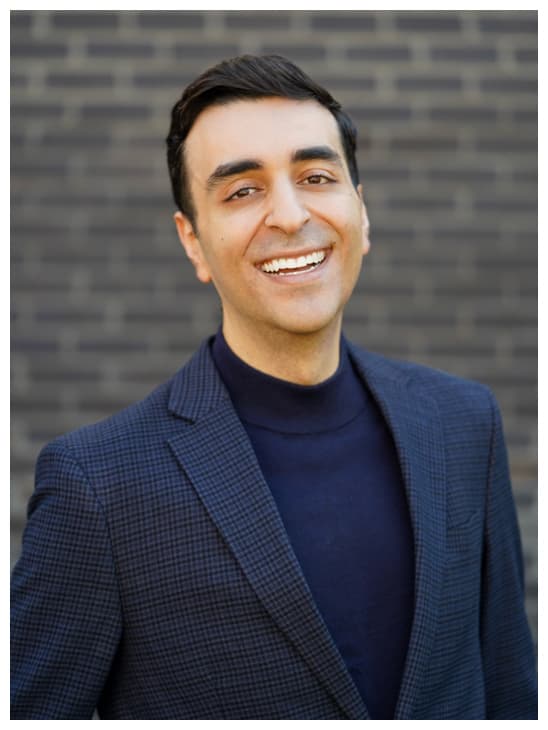MI Skin Dermatology Center: Melda Isaac, MD
Two Lafayette Centre
1133 21st Street NW, Suite 450
Washington, DC 20036
Phone: (202) 393-7546
Monday–Friday: 8:30 a.m.–4 p.m.
BOTOX® FAQ
Many people from Arlington and Alexandria, VA, and other cities near Washington, D.C., have questions about BOTOX injections and want answers from an expert. Read below to find board-certified dermatologists and expert injectors, Dr. Melda Isaac’s and Dr. Yanes’ answers to questions they are frequently asked by her patients about BOTOX.
Q: How does BOTOX work?
A: Years of smiling, laughing, and frowning can leave wrinkles and expressions lines on our face. BOTOX is an injectable neuromodulator that works by relaxing the muscles that cause fine lines and wrinkles. When the muscles in our face are unable to contract, the appearance of wrinkles is diminished.
Q: Can BOTOX freeze your face?
A: The only time you get a “frozen” look with BOTOX is when the injector has injected too much BOTOX into an area. Although a patient may request a completely frozen look, this is an extremely rare preference. This is why it’s so important to always find an expert for your cosmetic procedures. Any time you have to break the skin and/or deal with nerves and muscles, you cannot take your chances with someone who does not have a medical background. BOTOX can create quite a satisfying “lift” to the nose by relaxing the muscles that pull the nose downward. Which ones should be treated may vary based on the type of nose droop you have.
Q: Can you exercise after BOTOX or will it decrease the results?
A: It depends on the type of exercise. I recommend that you wait 2 hours before one lies down (i.e. bench pressing weights) or does any type of inversions (yoga) after receiving BOTOX. Exercising after wrinkle treatment injections has not been shown to decrease the results.
Q: What should you not do after BOTOX?
A: One of the beauties of BOTOX is there are few restrictions after treatment. I advise my patients not to lie down until two hours after their procedure, and not to immediately massage the injection area. It is truly a no downtime procedure.
Q: When does BOTOX start to fade?
A: On average, the effects of BOTOX gradually wear off within 3 to 4 months. Always be sure to visit a board-certified dermatologist for any wrinkle treatment injections to ensure the best results.
Q: What areas can BOTOX treat?
A: BOTOX can treat many areas of the face including frown lines, forehead wrinkles, crow’s feet, lip lines, and even neck and chest wrinkles.
Q: Is BOTOX a filler?
A: BOTOX is not a filler. Fillers replace lost volume and fill in wrinkles that are present without facial expressions in order to obtain a more youthful appearance. BOTOX is a neuromodulator that relaxes muscle movement.
Q: How long do BOTOX injections last?
A: Typical BOTOX results last 3-4 months, although experiences vary. Patients are encouraged to receive more injections once the effects have worn off.
Q: I’m 41 years old and am wondering if I could benefit from some BOTOX and fillers for a more refreshed, youthful look?
A: BOTOX would work well to soften lines in the forehead, frown lines, and crow’s feet, while hyaluronic dermal fillers such as Juvederm Voluma or Restylane Lyft can help restore volume to the midface and reduce the appearance of nasolabial folds. Sculptra Aesthetic injections would also be beneficial to restore more volume to your face. Please schedule your consultation to come up with a comprehensive plan.
Q: Is someone who is pregnant allowed to use BOTOX, or is it considered dangerous?
A: While there have not been any studies researching the effect of BOTOX on pregnant women, it is not advised to use them while pregnant. Please wait until after your pregnancy to resume.
Q: I’m 18 years old, but I want to fix my deep forehead lines up by my eyebrows. Can I try BOTOX?
A: BOTOX is a great way to prevent wrinkles from becoming deeper. It works by relaxing the muscles that cause the wrinkles in the first place, and is ideal for people who are just starting to see lines in their forehead, glabellar region, and at the corner of the eyes. I would recommend scheduling a consultation to see if BOTOX will meet your expectations in reducing the appearance of your forehead lines. If you have deep wrinkles even when you are not making facial expressions (resting lines), you may also need hyaluronic filler injections (Juvederm or Restylane) in addition to BOTOX for optimal results.
Q: Can anything be done to speed up the process of BOTOX leaving the body?
A: Unfortunately, there is nothing that can be done to reverse BOTOX injections. You’ll just have to wait for 3-4 months for the effects to wear off naturally. Side effects such as a droopy brow can occur if too much BOTOX is injected or if it’s injected into the wrong place by an inexperienced injector. Always be sure to see a board-certified dermatologist with extensive experience in any injectable treatments.
Turn Back the Clock
Rediscover a younger, more vibrant you. Trust award-winning dermatologists Dr. Melda Isaac and Dr. Daniel Yanes to restore your vibrance with individualized anti-aging procedures. Each treatment is meticulously planned and performed to take years off your face without leaving any obvious signs of a cosmetic treatment. Look as youthful as you feel, starting today.
Schedule ConsultationQ: How long after receiving BOTOX do you see the full benefit? Is there a limit to how long one can continue to receive treatments?
A: BOTOX starts to take effect after 3 to 4 days. However, I tell my patients maximum results are seen at 2 weeks. It is best to have injection treatments every 3-4 months, as it will gradually wear off within that time frame. To answer your last question, there is no limit set for how long a person can keep receiving wrinkle treatment injections. It is a fantastic treatment.
Q: I’m thinking about getting BOTOX injections in my forehead, but I don’t know what qualifications/education practitioners need to do BOTOX injections.
A: I recommend that you should always see a board-certified dermatologist or physician trained in cosmetic injections when receiving BOTOX, or any cosmetic treatment for that matter. Each state has their own rules and regulations when it comes to allowing certain people to inject wrinkle treatments or facial fillers. However, you should ask questions and get answers about one’s training, qualifications and experience I before having treatment.
Q: Is it safe to have BOTOX injections while breastfeeding?
A: Unfortunately, there are no current studies about breastfeeding and BOTOX, therefore we do not know if combining the two is entirely safe. Until further studies are done, it’s best to avoid BOTOX if you are pregnant or still breastfeeding.
Q: Can BOTOX help treat excessive sweating?
A: Yes, BOTOX, Dysport or Xeomin injections can be used to treat hyperhidrosis, also known as excessive sweating. Strategically placed neurotoxin injections are placed into the underarms or palms of the hands in order to significantly reduce the amount of sweat.
Q: Can BOTOX treat wrinkles under the eyes?
A: BOTOX can be used as a preventive measure to stop future wrinkles from forming, so starting treatment earlier is better. BOTOX is typically not used to treat wrinkles under the eye. Other options including fillers and laser or radiofrequency (RF) treatments may be more appropriate. I strongly suggest you schedule a consultation to determine the best treatment for your needs.
Q: Can you get a brow lift with BOTOX?
A: BOTOX can be used to gently lift your entire brow area, which will raise your eyebrows and lift the upper eyelid skin that is currently drooping. BOTOX will not lift a brow 5mm. A more reasonable expectation would probably be 2 mm or 3 mm. A couple of millimeters would make a big difference, however, in lightening up your expression. Please schedule a consultation for BOTOX to lift the brows.
Q: I have wrinkles pretty much across my entire face! So where would BOTOX be most effective?
A: BOTOX is a safe and effective treatment for reducing wrinkles formed from facial expressions, for example, forehead lines that form when one raises his or her eyebrows in surprise or frown lines that form between the eyes when one squints, concentrated or is angry. If you have “wrinkles all over your face” you may benefit from wrinkle injection treatments only where lines are accentuated with facial expressions (forehead and around eyes and lip lines). I suggest you seek a consultation to find out if another treatment may help you in addition to BOTOX.
Q: Will Botox cause my eyelid droop?
A: BOTOX does not cause permanent ptosis or even a temporary droopy lid if properly injected. You may have successful treatment as long as muscles that elevate the lid are not affected by BOTOX.
Q: I stopped getting BOTOX and noticed that my eyelids have started to droop. Is this normal?
A: If you feel your eyelids are droopy, I highly recommend that you see an ophthalmologist to rule out any other contributing conditions that can make your eyelids appear droopy. I also suggest you bring along photos of yourself from one or two years prior to your current age to visualize the change in your appearance. BOTOX does not cause permanent ptosis or droopy lids. Even if you “over did” your injections, its effects will wear off.
Q: Can I wash my face and have a bath after BOTOX injections? What about driving?
A: It’s fine to drive your car and wash your face immediately following a BOTOX injection, but it’s important to avoid vigorous massaging of your face. The only other restriction I offer my patients is to avoid lying flat for 2 hours post injection.
Q: How often can you do a BOTOX jaw reduction?
A: Don’t worry about doing your BOTOX touch-up a tad early: everybody metabolizes BOTOX differently, so the 3- to 4-month recommendation is just a guideline. One or two weeks either way should be fine. BOTOX is perfectly safe, so you don’t have to worry about getting “too much.” You may need less in this second treatment if your first treatment is still active. Please be sure to get your BOTOX from a board-certified dermatologist like Dr. Melda Isaac or Dr. Daniel Yanes at MI Skin Dermatology Center who has expert injection technique.
Q: Can I have BOTOX injections for TMJ but just for clenching only, as it’s disrupting my sleep?
A: Your temporomandibular joint disorder (TMJ) should improve with BOTOX injections, as they will relax the muscles that are now clenching. When treating the jaw, we inject the BOTOX into the masseters, which are responsible for opening and closing the jawbone. This will allow the masseters to relax and should provide you some relief. The clicking and bruxism should improve as well. There will also be a cosmetic effect: your face will probably look a bit slimmer. You will need to repeat the injections every three to four months. Please request a consultation with one of our dermatologists who has developed expert injection techniques to treat you with BOTOX for TMJ.
Q: Does BOTOX for migraines work immediately?
A: While BOTOX usually begins exerting its effects in muscles after just 2 weeks, it’s a little more complicated when used as a therapy for migraines. When I administer BOTOX for migraines I actually do it as a series. It may take a while before the migraines begin to respond. Once they do, the effects will wear off after about three to four months, at which time you should get another treatment.
Schedule a Botox Consultation in Washington, D.C., Today!
For more information, schedule a consultation with expert injectors Dr. Melda Isaac and Dr. Daniel Yanes by calling MI Skin Dermatology Center at (202) 393-7546 today!
About Our Doctors
Dr. Melda Isaac and Dr. Daniel Yanes are consistently recognized among the top dermatologists in Washington, DC. Our board-certified dermatologists provide both medical and cosmetic dermatology services with professionalism and compassion. Their specialized expertise in injectables and an eye for creating natural-looking results have made them a sought-after source for excellent dermatological care.





